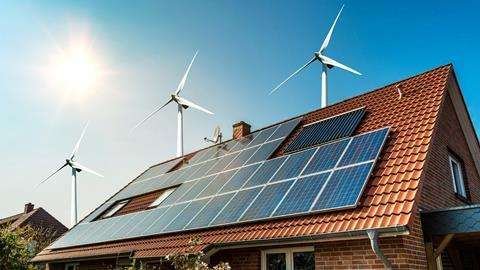
You don’t really think about it, but every time you turn the faucet on, your home uses energy and resources. The same goes for turning the lights on or tweaking the thermostat. Over time, all of this adds up, but not in terms of money. It adds up to the impact you make on the environment. Doesn’t that sound scary?
If you want to change this (and everyone should want to), it’s more than possible and you don’t even need to spend a fortune doing it. A few smart upgrades can help you save money in the long run and make a real difference for the planet.
Wouldn’t it be great if your windows could keep the warmth inside during winter and cool air during summer? How practical would it be if you could water your plants with rainwater? Maybe there’s a way your driveway could absorb the water instead of flooding your yard?
In this article, you’ll learn about some easy, eco-friendly upgrades you can make right away to help the environment.
Upgrades That Make a Difference
People think home upgrades are pricey and complicated, especially when it comes to making your home more sustainable. But that doesn’t have to be the case and these upgrades prove it.
Windows let the light in, but there’s another, more important job they have. They play a big role in how energy-efficient your home is. If you still have traditional single-pane windows, heat easily escapes in the winter and they let hot air in during summer. All this means that you need to run your heating and cooling systems longer. The end result? Higher bills and a bigger carbon footprint.
Double and triple-pane windows are much better options because they provide better insulation and trap the air between layers. Low-E coatings reflect heat and gas-filled windows add an extra barrier against changes in temperature.
Fresh water is a limited resource, but still, most households use more than what’s necessary every day for things like watering plants, flushing toilets, and washing cars. In the meantime, rainwater usually goes to waste.
This can easily be turned around with a harvesting system that stores rainwater for later use. A basic setup includes gutters that direct rainwater into the storage tank, which you can then filter and use around the house. You can use it for irrigation or integrate it into your plumbing for purposes other than drinking.
Heavy rain will cause a lot of problems if the water doesn’t have somewhere to go. If you have a traditional concrete or asphalt driveway, then there’s runoff, which leads to erosion, flooding, and even pollution because the water picks up contaminants on its way to storm drains. A permeable driveway is the solution for this.
Find gravel for sale (or permeable pavers) to switch out your driveway from traditional to permeable. It’ll create gaps where the water will naturally drain. This prevents flooding and replenishes levels of groundwater. Plus, a permeable driveway is more durable and needs less maintenance than a traditional one.
If you can generate your own renewable energy, then you have one of the most effective ways to reduce the impact your home makes on the environment. Solar panels convert sunlight into electricity, which means you can power your home without relying on fossil fuels.
The only issue with solar panels is that the upfront cost is high, but a lot of governments and utility companies offer incentives like tax credits, rebates, and net metering programs so you can sell excess energy back to the grid. Solar technology is more advanced than ever and these systems are more efficient than they ever were, plus they’re cheaper than they used to be.
Once solar panels are installed, you’ll save on electricity bills (possibly even eliminate them), and you’ll reduce carbon emissions.
Thanks to technology, it’s never been easier to run a more efficient home. With smart devices, you can reduce waste because you can optimize how you use water and energy.
Take smart thermostats, for instance. They learn your habits and automatically adjust the temperature when you’re away, so there’s no unnecessary heating and cooling. Smart lighting systems use motion sensors and timers, so lights stay off when you don’t need them to be on.
Then there are devices that monitor water usage. They can detect leaks before they become expensive problems. There are even smart power strips that can cut off power and idle electronics, so energy isn’t wasted on devices that are left on standby.
Each of these upgrades is very practical and they allow you to make your home greener while still staying comfortable.
It’s the best of both worlds. In the long run, you won’t just save money, but you’ll benefit our planet and everyone on it.
The post Sustainable Home Upgrades That Reduce the Impact on the Environment appeared first on Green.org.














